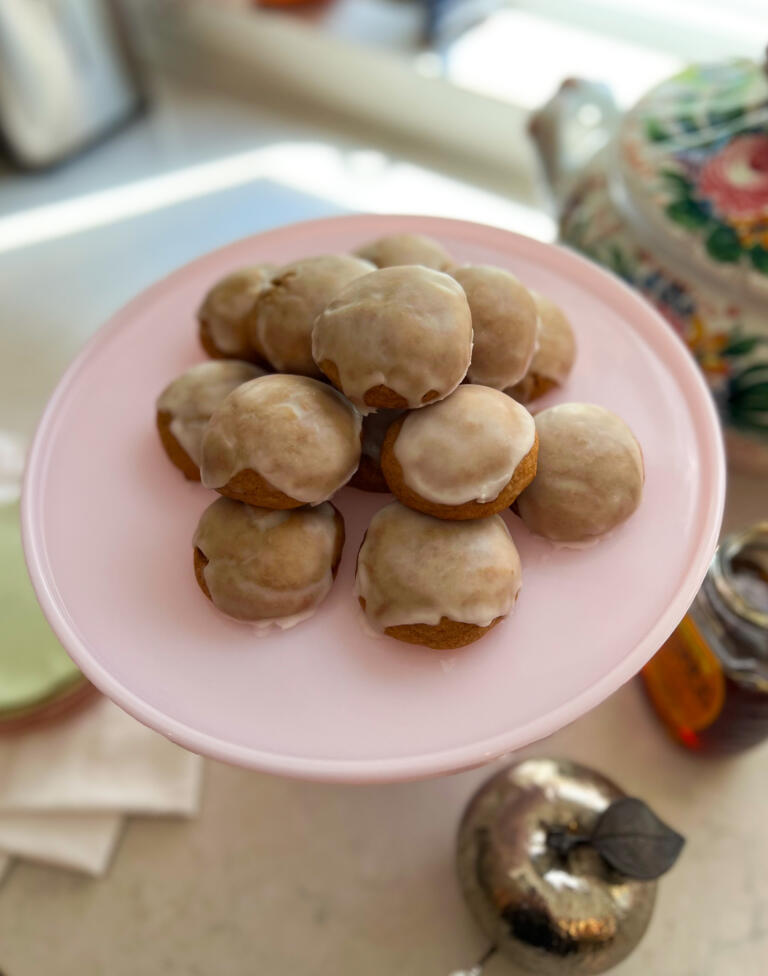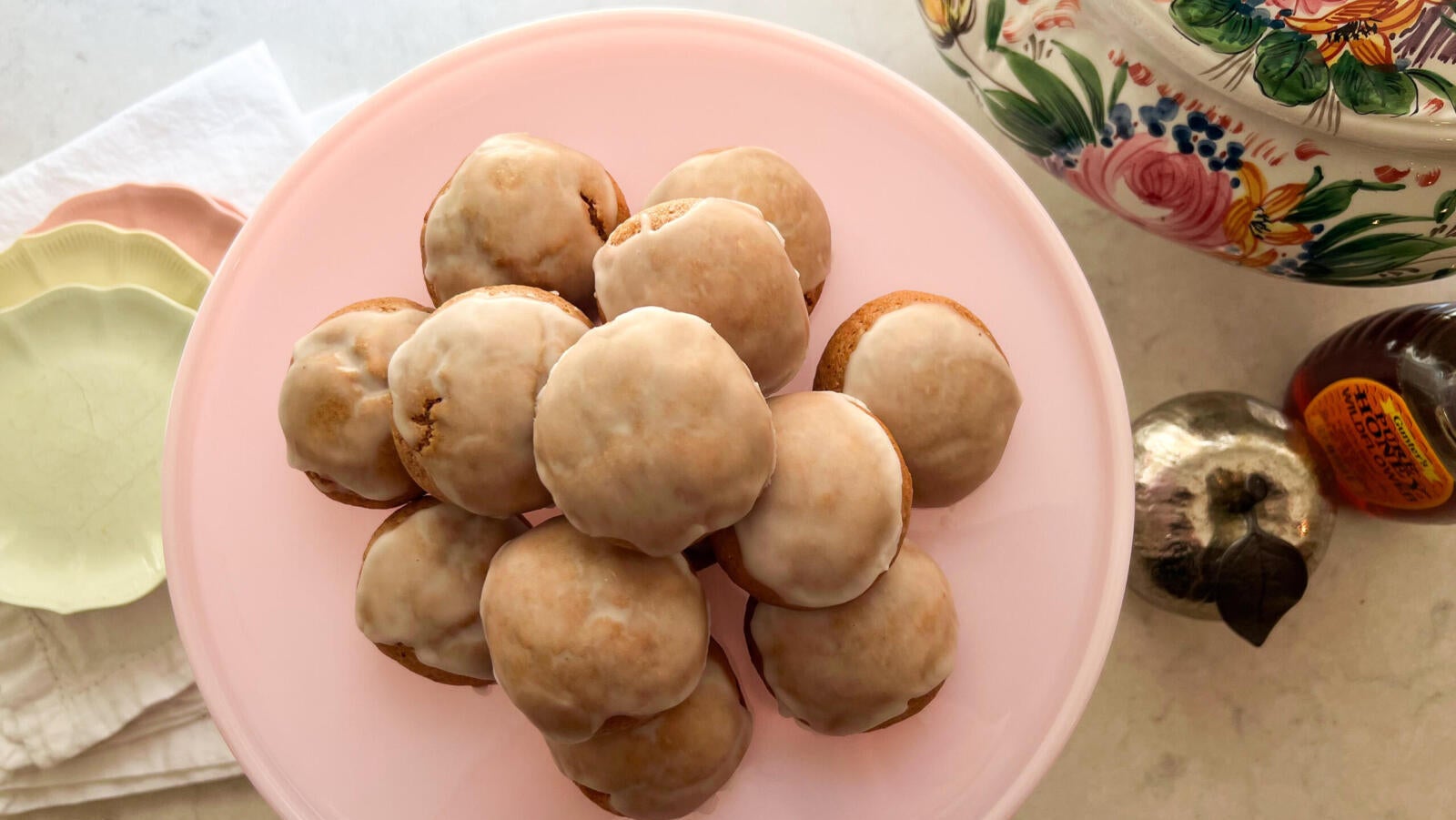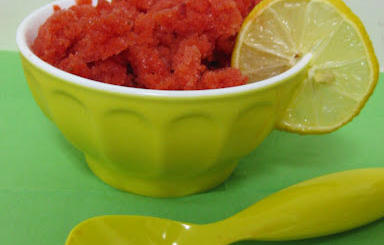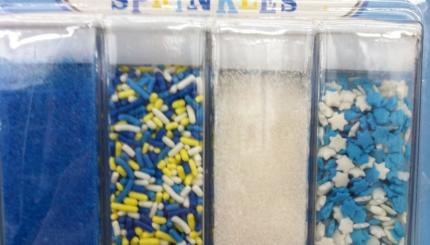Apples dipped in honey and honey cakes are popular across the Jewish world around Rosh Hashanah. But if you grew up in Israel, you most likely came across a unique variation of honey treats: duvshaniyot. These dense, dark, round honey cookies are a must in many families’ High Holidays nosh rotation.
The modest duvshaniyot (their name derives from the Hebrew word dvash, meaning honey) seem to have been part of the Israeli repertoire forever and you can find them on the cookie shelves in every supermarket in the country. They are cheap, pareve and last forever, so no wonder they have become a regular for Rosh Hashanah afternoon tea, for breaking the fast on Yom Kippur, and for dipping in a cold glass of milk in the sukkah. But these unassuming cookies hold a long history, as most Jewish and Israeli dishes do.
Duvshaniyot are the Israeli adaptation of a popular Russian cookie called pryaniki. Dating back to medieval Russia, pryaniki were made with honey, rye flour and berry juice, and were known simply as “honey bread.” Starting around the 12th or 13th centuries, when Russia started opening up to imports from the Middle East and India, spices and dried fruit were added to the cookie. In different regions throughout Russia, people experimented with new additions to this cookie, from jam filling to a later invention of sweetened condensed milk. Some versions were imprinted using delicate wooden forms, and some were simply rolled by hand and dipped in sugar glaze — the same version that’s still popular in Israel today.
People sometimes confuse pryaniki with German lebkuchen (aka gingerbread cookies), but it is rare to see ginger added to these classic Russian cookies, and even lebkuchen don’t always have ginger in them. Traditionally, pryaniki were spiced with cinnamon, nutmeg, cardamom, coriander, and even black pepper and cumin. In fact, their name, pryaniki, comes from the Russian word for spiced, pryanik.
The Nosher celebrates the traditions and recipes that have brought Jews together for centuries. Donate today to keep The Nosher's stories and recipes accessible to all.
Different versions of pryaniki can be found around Eastern Europe, like piernik in Poland and lect cookies in Slovenia, which are heart-shaped, painted red and artfully decorated with colorful icing. These Eastern European versions were traditionally served around Christmas, but were adapted by Jews for their own holidays, mainly Rosh Hashanah, for the use of the symbolic honey.
From Eastern Europe, the little honey cookie made its way to Israel and the United States. “The Settlement Cook Book,” a classic 1901 American Jewish cookbook by Lizzie Black Kander, includes two versions of lebkuchen, both with citrus and almonds, but no ginger. Even more interesting, is that neither include honey, but instead call for brown sugar or molasses.
An early Israeli cookbook, “Folklore Cookbook” by Molly Bar-David, has recipes for honey cookies that are similar to pryaniki and for lebkuchen. Bar-David suggests adding ginger to the honey cookies and calls for margarine instead of butter, maybe to keep the cookies pareve.
Today, Israeli manufacturers of duvshaniyot must be doing a good job, as I notice the same Israeli brand cookies at many Russian stores in the United States. But maybe because duvshaniyot are readily available in every supermarket, most Israelis do not prepare them at home. That’s a shame, because as is the case with most baked goods, homemade is better. And when the recipe is as easy as the one below, there’s no reason not to.
You can add any of the classic gingerbread cookie spices (cinnamon, nutmeg, cardamom, coriander, clove, and even black pepper and cumin) as well as cocoa powder, strong coffee or chopped chocolate. Candied citrus peel or any tart candied fruit, as well as citrus zest. You can try to replace some of the flour with rye flour to be closer to the original Russian version, or replace some of the flour with almond meal and make it closer to the German lebkuchen. It’s up to you.
Some recipes, including centuries-old recipes, suggest letting the dough rest for a few hours and up to a week before baking the cookies. This will deepen its flavors and will make rolling the dough easier. But even if you bake it right away, the cookies will improve with time, so I suggest baking them at least two days before serving. You can easily prepare them the week before Rosh Hashanah and then serve them for break the fast on Yom Kippur.
Notes:
- The cookie dough needs to chill in the refrigerator, or up to overnight.
- The cookies will improve with time, so I suggest baking them at least two days before serving, though you can keep them in a sealed container at room temperature up to a month.

Duvshaniyot (Israeli Honey Cookies)
These dense, delicious cookies are ubiquitous in Israel around the High Holidays.
- Total Time: 4 hours 35 minutes
- Yield: 30 cookies
Ingredients
For the cookies:
- ¾ cup honey
- ¼ cup light or dark brown sugar
- ½ cup butter
- 1 tsp cinnamon
- ½ tsp each cardamom, ginger, nutmeg, allspice
- ⅛ tsp black pepper
- 2 large eggs, at room temperature
- 1 tsp lemon or orange zest
- 1 tsp baking powder
- ¼ tsp baking soda
- 2 ½ cups all-purpose flour (you can substitute half with rye flour)
For the sugar glaze:
- 2 cups powdered sugar
- 1 tsp lemon juice
- 2–3 Tbsp water
Instructions
- Place a saucepan with ½ inch water on a burner and turn to medium heat. Put a large metal or glass bowl over the saucepan and bring water to simmer. Once the water boils. Add honey, sugar, butter and spices to the bowl and mix until butter melts and all the ingredients incorporate. Remove bowl from the heat and let cool for about 30 minutes.
- Add eggs and lemon zest to the bowl and mix.
- Add baking powder, baking soda and flour to the mixture and mix with a wooden spoon or a spatula until smooth. Cover bowl and place in the fridge for 4 hours and up to overnight.
- When you‘re ready to bake, turn the oven to 350°F. Line two baking sheets with parchment paper.
- Use your hands to roll 1-inch-round cookies and place them 2 inches apart on the baking sheet.
- Bake for 13-15 minutes, switching between baking sheets after 7 minutes, until cookies are just golden at the bottom. Do not over-bake, as the cookies will become too hard. Transfer to a cooling rack until completely cold.
- To make the sugar glaze, mix powdered sugar, lemon juice and 2 Tbsp water with a spoon in a medium bowl. If the mixture seems too dry, add up to 1 Tbsp more water and keep on mixing until a smooth glaze is formed.
- Dip the cookie tops in the glaze and put back on the cooling rack to set.
Notes
- The cookie dough needs to chill in the refrigerator, or up to overnight.
- The cookies will improve with time, so I suggest baking them at least two days before serving, though you can keep them in a sealed container at room temperature up to a month.
- Prep Time: 15 minutes + 4 hours chill time
- Cook Time: 20 minutes
- Category: Dessert
- Method: Baking
- Cuisine: Jewish




Q: the instructions say to roll each cookie into a 1 in. round. Does that mean a 1″ ball or flattened to make a 1″ circle?
Q: Can the cookies be dipped in melted chocolate instead of the sugar glaze? Or include chopped chocolate? Would the chocolate overpower the honey taste?
You do not need to flatten the cookies. You can dip them in chocolate; a chocolate glaze or additional chopped chocolate may overpower the taste. Please let us know how they turn out if you do!
Thanks very much for your helpful replies to my questions! I was just about to start baking when I read the steps for baking and have one more question before actually baking. I think I know what you mean, but I want to check to be sure.
Q: What do you mean by “switching between baking sheets after 7 minutes”? Do you mean taking one sheet out after 7 minutes and putting the other sheet in the oven? Or (as I think you mean) switching positions in the oven, i.e., taking the sheet on the middle rack and putting it down below on the bottom rack and putting the sheet that was on the bottom rack in the middle?
Switching positions so each tray is baked evenly. Enjoy!
THANK YOU! These honey cookies are delicious and have a very complex, interesting taste, especialy given the spice blend in this recipe. I used half rye flour and half white all-purpose. And they do get even better the next day.,
Can I substitute margarine or vegan butter in place of butter?
Sure!
Hi, All the recipes sound lovely, however, we dont use cups in the uk. Would it be possible to include uk metric or imperial measures for recipes, please.
Could gluten free flour be used
We haven’t tested this recipe with gluten-free flour, but please let us know how they turn out if you do. If you’re looking for a gluten-free cookie recipe, why not try these rugelach or these lace cookies filled with Nutella.